Krzysztof Komeda - Astigmatic (Polish Jazz) (2004)
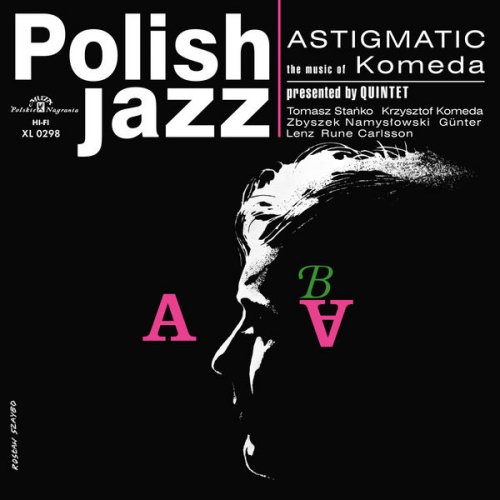
Artist: Krzysztof Komeda
Title: Astigmatic (Polish Jazz)
Year Of Release: 2004
Label: Polskie Nagrania Muza
Genre: Post Bop, Modal, Free Jazz
Quality: FLAC (tracks+.cue,log) / 320 kbps
Total Time: 46:48
Total Size: 320 / 107 MB
WebSite: Album Preview
Tracklist:Title: Astigmatic (Polish Jazz)
Year Of Release: 2004
Label: Polskie Nagrania Muza
Genre: Post Bop, Modal, Free Jazz
Quality: FLAC (tracks+.cue,log) / 320 kbps
Total Time: 46:48
Total Size: 320 / 107 MB
WebSite: Album Preview
1. Astigmatic - 22:50
2. Kattorna - 7:20
3. Svantetic - 15:50
Astigmatic has become a bellwether for European jazz, with critics pointing to how this album marked a shift away from the dominant American approach with the emergence of a specific European aesthetic. In terms of structure (ad hoc song forms that had a lot to do with Komeda s film writing), its improvisational and rhythmic approach, Astigmatic represents a fresh approach and a different way of hearing and playing jazz.
--Stuart Nicholson, Leeds College of Music
His music reflects not the growing of jazz in our country in the '60-s, but echoes the big influences: Bill Evan's refinement, Eric Dolphy's free and even John Coltrane's abandon. The title piece 'Astigmatic', except for the beginning, presents little of ensemble interaction. Rather, we hear exciting dialogues by trumpet and piano or trumpet and bass. Komeda's piano dictates the levels of tension: it emerges, grows inciting, fades away and emerges again. Namyslowski's alto takes up backed by bass and drums. Lenz's solo opens the way for the drummer and then piano reappears. After a sudden take-off by the whole ensemble the piece burns out in barely audible bass flageolets. 'Kattorna' a disquieting music from the Danish movie by Carlssen (the title means Kittens), changes on this disc into real tour de force by Stanko, that reminds us of Mexican deguello from the siege of Alamo time. Komeda's exceptional illustrative talent made him the much valued composer of music to many movies and among them some by R. Polanski. 'Svantetic', dedicated to Swedish poet Svante Forster, creates initially an impression of a dirge, but its main diatonic motif in d-minor (a Polish boy scouts song) is merely the nucleus of truly dramatic jazz development in which we hear much of Namyslowski's alto and also beautiful meditations by bass and piano. It seems to be the best piece by Komeda. However, structurally it has double ending: after the first, the drum solo leads to the reappearance of the initial theme that spans the whole, but the last sentence - not without the protest of others - belongs to the trumpet.
--Andrzej Schmidt, Polish Jazz
Recorded by a quintet led by Polish pianist / composer Krzysztof Komeda, the legendary Godfather of Polish Jazz, this is definitely the most important piece of music recorded in Eastern Europe, which changed the face of Culture far beyond what most people realize. Universally accepted as a model and artistic / aesthetic climax by generations of Jazz musicians in Komeda´s native Poland and far beyond the country borders, this modern Jazz recording influenced innumerable minds and prompted endless artistic processes. The album includes just three pieces of music: the title track; "Kattorna", which was a theme in the soundtrack of a movie by the Danish director Henning Carlsen; and "Svantetic", a tune dedicated to the Swedish poet Svante Forster, Komeda´s friend. The quintet included trumpeter Tomasz Stanko, saxophonist Zbigniew Namyslowski, German bassist Gunter Lenz and Swedish drummer Rune Carlsson. Playing in every possible grouping, from solo to a full quintet, these brilliant and inspired musicians manage to achieve a whole, which is so much more than a sum of its parts. The result goes way beyond soloing, improvising, interplaying and exchanging ideas; it is a sort of group creation, which builds upon the basic structures, which are the mesmerizing Komeda´s melodies and soaring infinitely towards a musical heaven. There is everything here: melody, harmony, freedom and structure, rhythm and space, all simultaneously represented without conflicting and fighting for supremacy. Such harmonious music-making is indeed very rare and therefore priceless. One might wonder how this wonderful music happened in Poland of all places. Well the reasons for this are numerous and complex, but of course genius knows no geographical limitations and catalyzed by the fertile intellectual background of the 1960s Poland, struggling with Socialist regime and longing for Freedom, Jazz became an escape route, which in this case found its true vocation. Of course the fact that Stanko and Namyslowski were (and thank God still are) exceptionally gifted musicians helped to materialize the potential of Komeda´s music. One might as well look into Komeda´s fascination (and adoration) of the music and life of John Coltrane, who served as a beacon and a model in the composer´s path to inner enlightenment. And yet Komeda did not succumb to Coltrane´s (or indeed the entire American Free Jazz movement) ideas blindly and unconditionally, as did many of his peers. He decided to incorporate the struggle for Freedom, which was a central scheme in Coltrane´s philosophy (both musical and personal) with his deep European cultural roots and heritage, building his very personal bridge between Cultures. This is why his music works so well, regardless if it´s a concert played in a Jazz club or a movie soundtrack. It is simply transcending stylistic or circumstantial limitations, as any higher level of Art is able to do. The fact that this music was created almost fifty years ago is a sad reminder of how little progress (if any) we managed to achieve since. In face of this fact we should cherish the great achievements of our Culture and keep them close to our hearts. This is definitely one of those great achievements, so let´s treat it accordingly. Absolutely essential!
--Stuart Nicholson, Leeds College of Music
His music reflects not the growing of jazz in our country in the '60-s, but echoes the big influences: Bill Evan's refinement, Eric Dolphy's free and even John Coltrane's abandon. The title piece 'Astigmatic', except for the beginning, presents little of ensemble interaction. Rather, we hear exciting dialogues by trumpet and piano or trumpet and bass. Komeda's piano dictates the levels of tension: it emerges, grows inciting, fades away and emerges again. Namyslowski's alto takes up backed by bass and drums. Lenz's solo opens the way for the drummer and then piano reappears. After a sudden take-off by the whole ensemble the piece burns out in barely audible bass flageolets. 'Kattorna' a disquieting music from the Danish movie by Carlssen (the title means Kittens), changes on this disc into real tour de force by Stanko, that reminds us of Mexican deguello from the siege of Alamo time. Komeda's exceptional illustrative talent made him the much valued composer of music to many movies and among them some by R. Polanski. 'Svantetic', dedicated to Swedish poet Svante Forster, creates initially an impression of a dirge, but its main diatonic motif in d-minor (a Polish boy scouts song) is merely the nucleus of truly dramatic jazz development in which we hear much of Namyslowski's alto and also beautiful meditations by bass and piano. It seems to be the best piece by Komeda. However, structurally it has double ending: after the first, the drum solo leads to the reappearance of the initial theme that spans the whole, but the last sentence - not without the protest of others - belongs to the trumpet.
--Andrzej Schmidt, Polish Jazz
Recorded by a quintet led by Polish pianist / composer Krzysztof Komeda, the legendary Godfather of Polish Jazz, this is definitely the most important piece of music recorded in Eastern Europe, which changed the face of Culture far beyond what most people realize. Universally accepted as a model and artistic / aesthetic climax by generations of Jazz musicians in Komeda´s native Poland and far beyond the country borders, this modern Jazz recording influenced innumerable minds and prompted endless artistic processes. The album includes just three pieces of music: the title track; "Kattorna", which was a theme in the soundtrack of a movie by the Danish director Henning Carlsen; and "Svantetic", a tune dedicated to the Swedish poet Svante Forster, Komeda´s friend. The quintet included trumpeter Tomasz Stanko, saxophonist Zbigniew Namyslowski, German bassist Gunter Lenz and Swedish drummer Rune Carlsson. Playing in every possible grouping, from solo to a full quintet, these brilliant and inspired musicians manage to achieve a whole, which is so much more than a sum of its parts. The result goes way beyond soloing, improvising, interplaying and exchanging ideas; it is a sort of group creation, which builds upon the basic structures, which are the mesmerizing Komeda´s melodies and soaring infinitely towards a musical heaven. There is everything here: melody, harmony, freedom and structure, rhythm and space, all simultaneously represented without conflicting and fighting for supremacy. Such harmonious music-making is indeed very rare and therefore priceless. One might wonder how this wonderful music happened in Poland of all places. Well the reasons for this are numerous and complex, but of course genius knows no geographical limitations and catalyzed by the fertile intellectual background of the 1960s Poland, struggling with Socialist regime and longing for Freedom, Jazz became an escape route, which in this case found its true vocation. Of course the fact that Stanko and Namyslowski were (and thank God still are) exceptionally gifted musicians helped to materialize the potential of Komeda´s music. One might as well look into Komeda´s fascination (and adoration) of the music and life of John Coltrane, who served as a beacon and a model in the composer´s path to inner enlightenment. And yet Komeda did not succumb to Coltrane´s (or indeed the entire American Free Jazz movement) ideas blindly and unconditionally, as did many of his peers. He decided to incorporate the struggle for Freedom, which was a central scheme in Coltrane´s philosophy (both musical and personal) with his deep European cultural roots and heritage, building his very personal bridge between Cultures. This is why his music works so well, regardless if it´s a concert played in a Jazz club or a movie soundtrack. It is simply transcending stylistic or circumstantial limitations, as any higher level of Art is able to do. The fact that this music was created almost fifty years ago is a sad reminder of how little progress (if any) we managed to achieve since. In face of this fact we should cherish the great achievements of our Culture and keep them close to our hearts. This is definitely one of those great achievements, so let´s treat it accordingly. Absolutely essential!
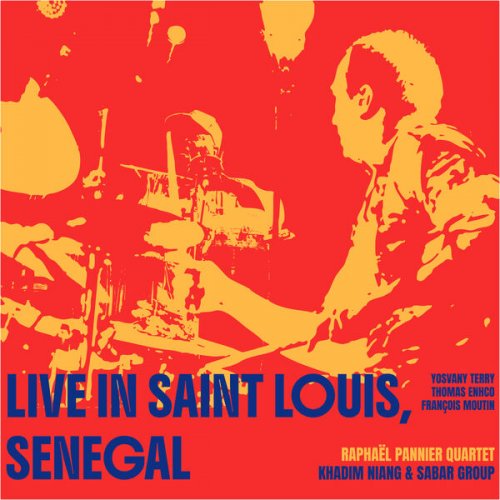
![Chris Connor - Free Spirits (Remastered) (2025) [Hi-Res] Chris Connor - Free Spirits (Remastered) (2025) [Hi-Res]](https://www.dibpic.com/uploads/posts/2025-12/1765538301_ccfs500.jpg)
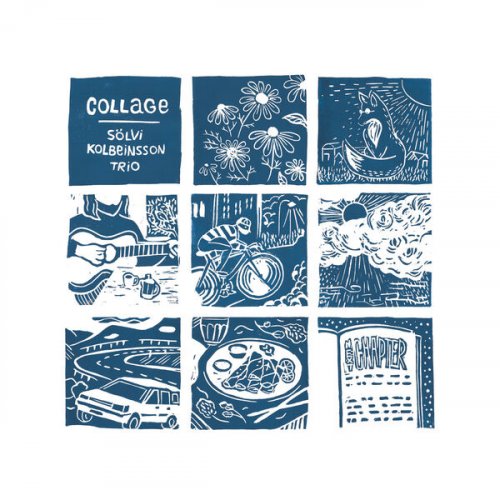
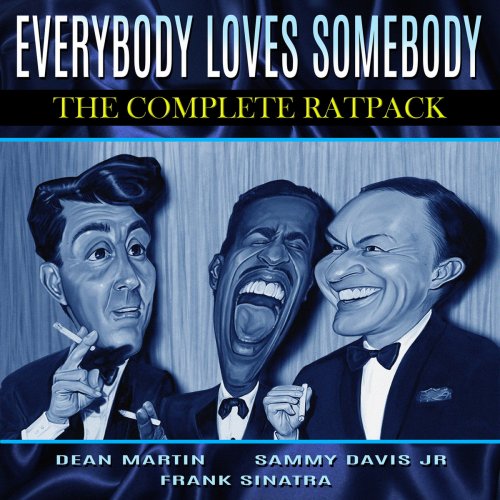
![Amira Kheir - Black Diamonds (2025) [Hi-Res] Amira Kheir - Black Diamonds (2025) [Hi-Res]](https://www.dibpic.com/uploads/posts/2025-12/1765640459_tf7wrmc9lqmqc_600.jpg)
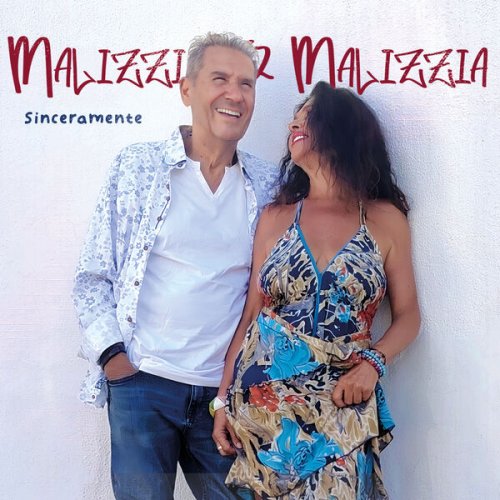

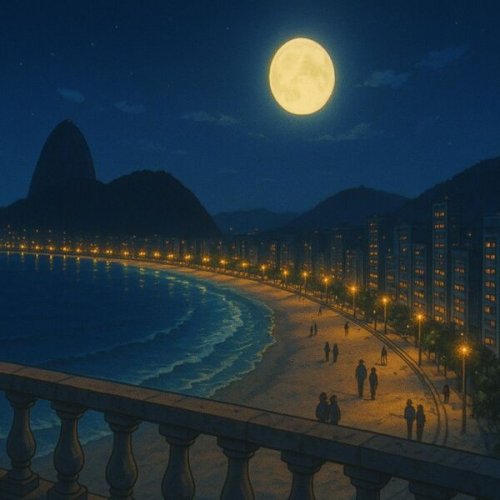
![Nicole Zuraitis - Holiday Up EP (2025) [Hi-Res] Nicole Zuraitis - Holiday Up EP (2025) [Hi-Res]](https://www.dibpic.com/uploads/posts/2025-12/1765478937_cover.jpg)